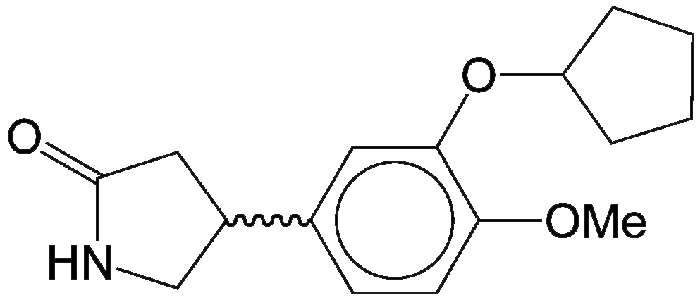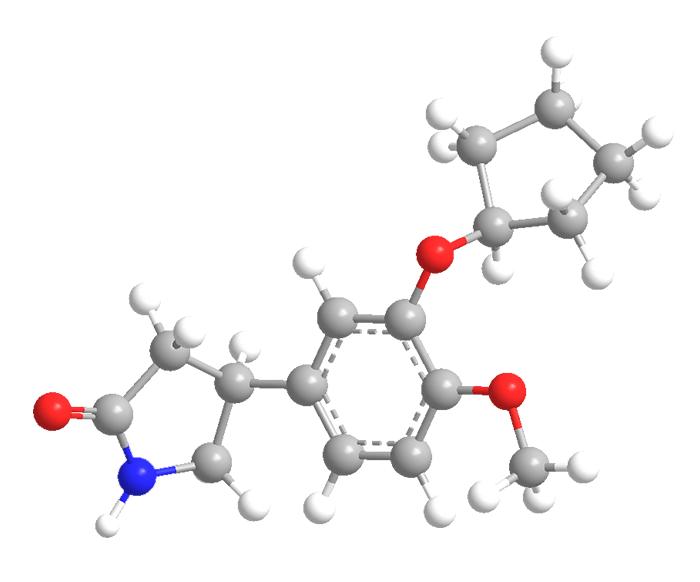What molecule am I?


Rolipram, a selective phosphodiesterase-4 inhibitor, was originally developed by Schering as an antidepressant in the 1990s. Although it was a prototype for some drugs developed later, Schering abandoned it because its effective dosage caused significant adverse side effects.
But rolipram isn’t without merit. It was soon discovered that it can accelerate proteasomes’ activity for disposing of toxic protein aggregates that lead to neurodegenerative diseases.
The misfolded tau protein is the aggregate associated with Alzheimer’s disease. Recently, studies by Natura Myeku and co-workers at Columbia University (New York) showed that tau may responsible for attacking proteasomes and disrupting their activity. They then found that when rolipram is administered to mice that were engineered to generate a tau protein, the drug increases proteasome activity, depresses aggregate formation, and improves the animals’ spatial memory.

Learn more about this molecule from CAS, the most authoritative and comprehensive source for chemical information.
Molecule of the Week needs your suggestions!
If your favorite molecule is not in our archive, please send us a message. The molecule can be notable for its current or historical importance or for any quirky reason. Thank you!
Stay Ahead of the Chemistry Curve
Learn how ACS can help you stay ahead in the world of chemistry.

